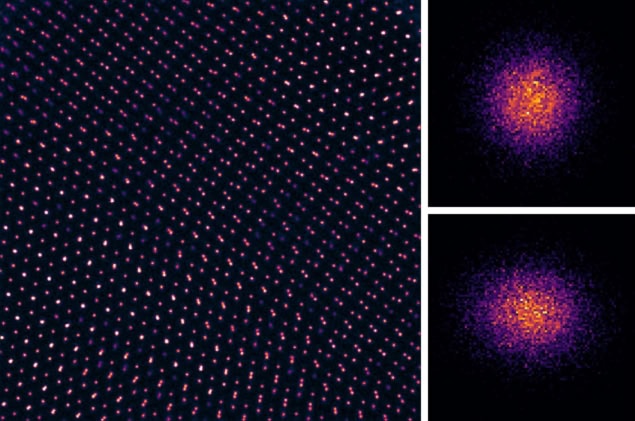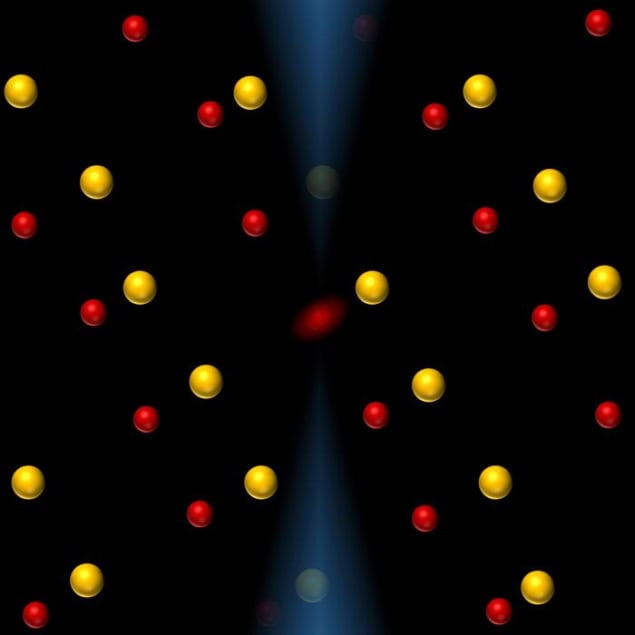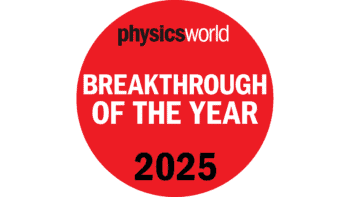
Researchers in the US have directly imaged a class of extremely low-energy atomic vibrations called moiré phasons for the first time. In doing so, they proved that these vibrations are not just a theoretical concept, but are in fact the main way that atoms vibrate in certain twisted two-dimensional materials. Such vibrations may play a critical role in heat and charge transport and how quantum phases behave in these materials.
“Phasons had only been predicted by theory until now, and no one had ever directly observed them, or even thought that this was possible,” explains Yichao Zhang of the University of Maryland, who co-led the effort with Pinshane Huang of the University of Illinois at Urbana-Champaign. “Our work opens up an entirely new way of understanding lattice vibrations in 2D quantum materials.”
A second class of moiré phonons
When two sheets of a 2D materials are placed on top of each other and slightly twisted, their atoms form a moiré pattern, or superlattice. This superlattice contains quasi-periodic regions of rotationally aligned regions (denoted AA or AB) separated by a network of stacking faults called solitons.
Materials of this type are also known to possess distinctive vibrational modes known as moiré phonons, which arise from vibrations of the material’s crystal lattice. These modes vary with the twist angle between layers and can change the physical properties of the materials.
In addition to moiré phonons, two-dimensional moiré materials are also predicted to host a second class of vibrational mode known as phasons. However, these phasons had never been directly observed experimentally until now.
Imaging phasons at the picometre scale
In the new work, which is published in Science, the researchers used a powerful microscopy technique called electron ptychography that enabled them to image samples with spatial resolutions as fine as 15 picometres (1 pm = 10-12 m). At this level of precision, explains Zhang, subtle changes in thermally driven atomic vibrations can be detected by analysing the shape and size of individual atoms. “This meant we could map how atoms vibrate across different stacking regions of the moiré superlattice,” she says. “What we found was striking: the vibrations weren’t uniform – atoms showed larger amplitudes in AA-stacked regions and highly anisotropic behaviour at soliton boundaries. These patterns align precisely with theoretical predictions for moiré phasons.”

Zhang has been studying phonons using electron microscopy for years, but limitations on imaging resolutions had largely restricted her previous studies to nanometre (10-9 m) scales. She recently realized that electron ptychography would resolve atomic vibrations with much higher precision, and therefore detect moiré phasons varying across picometre scales.
She and her colleagues chose to study twisted 2D materials because they can support many exotic electronic phenomena, including superconductivity and correlated insulated states. However, the role of lattice dynamics, including the behaviour of phasons in these structures, remains poorly understood. “The problem,” she explains, “is that phasons are both extremely low in energy and spatially non-uniform, making them undetectable by most experimental techniques. To overcome this, we had to push electron ptychography to its limits and validate our observations through careful modelling and simulations.”
This work opens new possibilities for understanding (and eventually controlling) how vibrations behave in complex 2D systems, she tells Physics World. “Phasons can affect how heat flows, how electrons move, and even how new phases of matter emerge. If we can harness these vibrations, we could design materials with programmable thermal and electronic properties, which would be important for future low-power electronics, quantum computing and nanoscale sensors.”

Physicists close in on fractionally-charged electron mystery in graphene
More broadly, electron ptychography provides a powerful new tool for exploring lattice dynamics in a wide range of advanced materials. The team is now using electron ptychography to study how defects, strain and interfaces affect phason behaviour. These imperfections are common in many real-world materials and devices and can cause their performance to deteriorate significantly. “Ultimately, we hope to capture how phasons respond to external stimuli, like how they evolve with change in temperature or applied fields,” Zhang reveals. “That could give us an even deeper understanding of how they interact with electrons, excitons or other collective excitations in quantum materials.”



